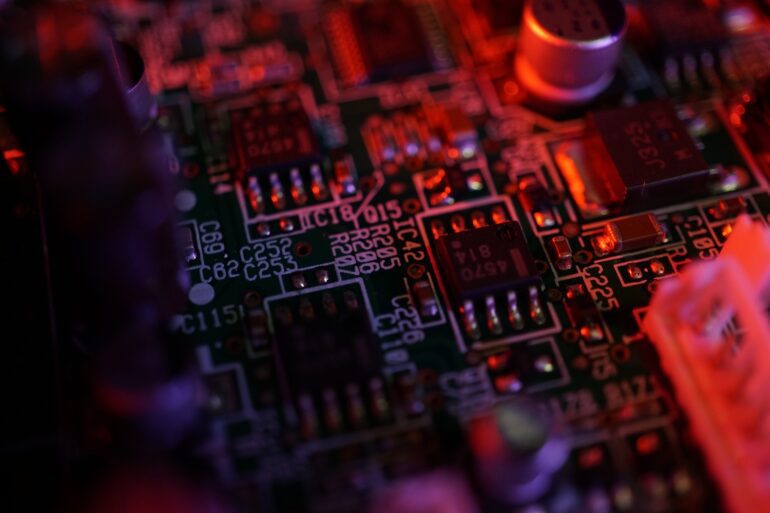TL;DR:
- Global chipmakers like Intel and Samsung see signs of improvement in semiconductor supply glut.
- Demand expectations from customers outside the AI industry remain low due to economic challenges and spending cuts.
- The chip market for smartphones, PCs, and data centers has shrunk in 2023.
- Samsung and SK Hynix report a significant first-half operating loss due to oversupply.
- The oversupply situation is easing with production cuts and a slowdown in PC shipments.
- The smartphone market shows signs of recovery with a lower decline in shipments.
- Demand for chips to support generative AI platforms is increasing but represents a small portion of overall demand.
- Intel CEO predicts a continued inventory glut in server CPUs until the second half of the year.
- China reduces overall chip purchases, impacting the smartphone market.
- Chipmakers increase the production of high-end chips to support AI-related applications.
Main AI News:
The global semiconductor industry, dominated by key players like Intel and Samsung, is finally witnessing signs of improvement in its supply glut. However, the chipmakers face a challenging scenario as demand from customers outside the AI sector remains stagnant. In the year 2023, the chip market experienced a decline in demand for smartphones, PCs, and data centers. The weakened economy, plagued by inflation and rising interest rates, has compelled both corporate clients and consumers to cut back on spending, leading to an unprecedented oversupply of commodity chips.
This oversupply situation has dealt a heavy blow to two of the industry giants, Samsung and SK Hynix, resulting in a combined record of 15.2 trillion won ($12 billion) operating loss during the first half of the year. However, there is a glimmer of hope as the oversupply situation begins to ease, thanks to production cuts and a slowdown in PC shipments. Canalys, a tech analytics firm, reported that PC shipments fell by 11% in the June quarter, showing a significant improvement compared to the drastic 30% slump in each of the previous two quarters.
The smartphone market is also showing signs of recovery, with cellphone shipments experiencing a lower 8% decline in the June quarter, as opposed to the 14% drop observed in the first quarter, according to research firm Counterpoint. Despite these positive developments, the road to complete recovery is gradual, as Woohyun Kim, the CFO of SK Hynix, pointed out during an earnings call this week.
Kim emphasized that the recent uptick in PC shipments was mainly driven by promotional efforts and the popularity of low-end models, which provided only limited support to the overall chip demand recovery. Moreover, while the demand for chips to support generative AI platforms like ChatGPT is increasing, this sector still represents only a small portion of the total demand, and it is not enough to offset the decline in corporate spending on servers.
Intel CEO, Pat Gelsinger, also added his insights, stating that an inventory glut in server central processing units (CPUs) will continue until the second half of the year. Gelsinger further predicted that data center chip sales would experience a modest decline in the third quarter, but the sector should recover in the fourth quarter.
Meanwhile, China, the largest chip buyer globally, has cut back on its overall purchases, leading both Samsung and SK Hynix to report that China’s reopening did not have the desired impact on the smartphone market. As a result, they are prolonging production cuts of NAND memory chips, which are essential components in smartphones for storing digital data.
In the face of these challenges, Tim Archer, the CEO of Lam, a chip equipment manufacturer, highlighted the importance of advanced AI servers. These servers boast cutting-edge logic, memory, and storage capabilities, and their increased adoption is expected to drive substantial investment, ranging from $1 billion to $1.5 billion, in chip equipment.
To address the growing demand for AI-related chips, chipmakers are ramping up the production of high-end chips that offer robust support to artificial intelligence applications.
Overall, the semiconductor industry is navigating through a complex landscape. While the supply glut is starting to ease, demand remains uncertain, with AI-related chips still representing a small fraction of the overall market. Nonetheless, industry players are hopeful and taking strategic steps to foster growth and innovation, which will undoubtedly shape the future of the semiconductor sector.
Conclusion:
The semiconductor market is gradually recovering from the supply glut, but the overall demand remains uncertain, especially outside the AI industry. Economic challenges and spending cuts have contributed to the decline in the chip market for various devices. While the demand for chips to support AI platforms is growing, it is not sufficient to offset the decline in corporate spending on servers. The market’s future will heavily depend on how well chipmakers adapt to changing demands and invest in innovative solutions for AI-related applications.

